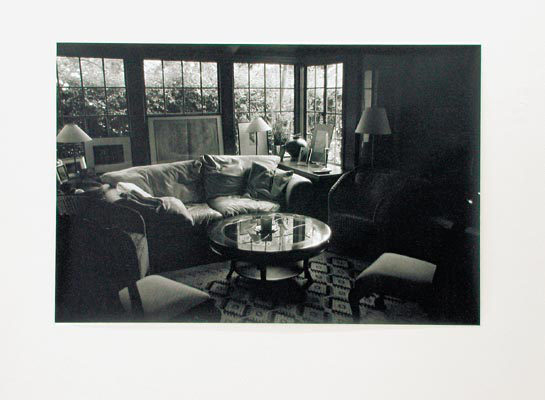| Umělec 2002/4 >> The secret of the flower pot (Markéta Othová, Dům umění, Brno) | Просмотр всех номеров | ||||||||||||
|
|||||||||||||
The secret of the flower pot (Markéta Othová, Dům umění, Brno)Umělec 2002/401.04.2002 Jiří Ptáček | reviews | en cs |
|||||||||||||
|
The Secret of the Flowerpot
Markéta Othová, Other Voices, Dům umění, České Budějovice, October 17 – November 30, 2002 Markéta Othová is a unique discovery in her generation. She thoroughly enchases her photographic concept of eternity, and because she stresses the inner ties of her program, she is unusually transparent with her work. Points of reality, about which it is possible to state that they are civilized and mundane, are persistently disclosed in large-scale black and white pictures. She focuses on the human being, though not as the driving force of civilization, but rather as the tool of its own reflection and correction. This is also true of the pictures in which no human appears, including her new cycle Other Voices exhibited in České Budějovice. Othová has not changed her ways. But contrary to all expectations it appears that she has redirected significant vectors. In Other Voices the diction fully vibrates for the first time, which also backwardly influences opinions to what she has devoted herself to in the last two or three years. This regards her pictures of furnished interiors. We do not truly meet their inhabitants in either of them, yet there are numerous traces of their stay. A living room with a massive sitting set, liberated from dimness by the light of a big garden window, was tidied up by someone. Someone else has stashed away a flowerpot and plant on the surface of a kitchen unit. A tray with bear bottles was prepared on a wobbly table for some guests. But the room itself is a basic hint: in the modestly equipped space we identify with the owner through a small working space in the corner. Yes, these are not places we have personal experience with; yet we have the inclination to regard them as models. They seem familiar to us and photographed only to be lifted and named by the author. With Othová we are ready for it. Nevertheless it seems that this time it concerns more layered material. The strangeness of certain pictures forces us to react to the joke and the mystery, but to the petrifaction as well. Interior after interior discloses its distance. Not only are we unable to puzzle out the causes of some events from which the person has slipped so that they could be photographed, but we also unsure what the act of observation is and what the artist is arranging. Mostly we start to feel uncertainty from the unknown of particular things. We are like an archeologist who appears before a discovery lacking any connections. Even though one is tempted to use personal experience, it’s impossible to get rid of doubts that one will negate the uniqueness of the discovery. One arrives at the intrusive word “maybe,” and can continue to search in vain for proof confirming one’s assumption. Or one will come to terms with permanent alienation, and possibly get some receive excitement from that alone. One is a voyeur and does not even know why. One researches but does not get material of any use. Othová offers us discoveries. We know that she knows, but also we know that she does not want to reveal. When she uses the formal “given” of photographic media, she transfers real space into conventional aesthetic form, as the photographic medium allows and as the skilled and intelligent artist handles well. It is as if she strings objects as well as light atmosphere onto a geometric lining of surfaces. On the other hand, there is the depth and sharpness of pictures, as if she let them come only from the optics of the camera. But who knows what all can be done with a negative being transferred to a blow-up. One doubts. If we daringly call Othová a master of manipulation, then it will be for the obscurity with which she makes her manipulations. Her photos do not suffer this, on the contrary. Othová has created an exceptional cycle that deconstructs her investigation of things and situations all the way up to the discovery of metaphysical unity within her work. Metaphysical in the general sense of the term: when the whole is divisible into parts, yet as a result these parts are again identical with the whole. In this way the viewer can step into the offered road through an intimate journey into intimate interiors, but eventually he will find himself back at the beginning. Other Voices touches communication in the most sensitive point, when it directly challenge storytelling, but at the same time it disputes its legitimacy. But because of this they remain strong, orthodox pictures.
01.04.2002
Рекомендуемые статьи
|
|||||||||||||








Комментарии
Статья не была прокомментированаДобавить новый комментарий